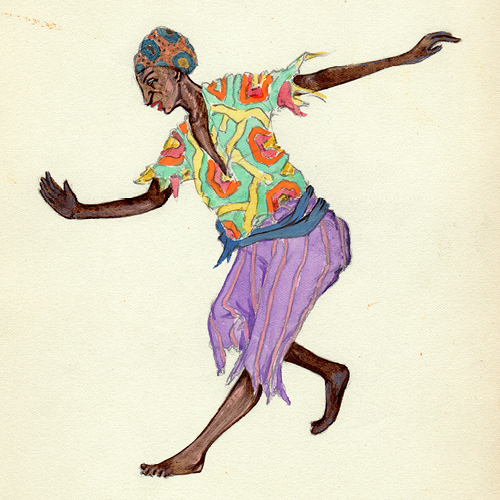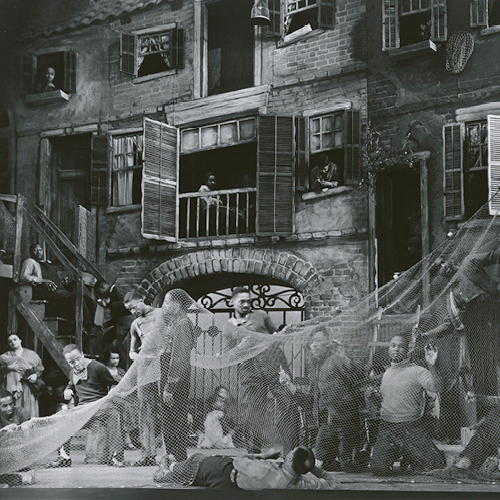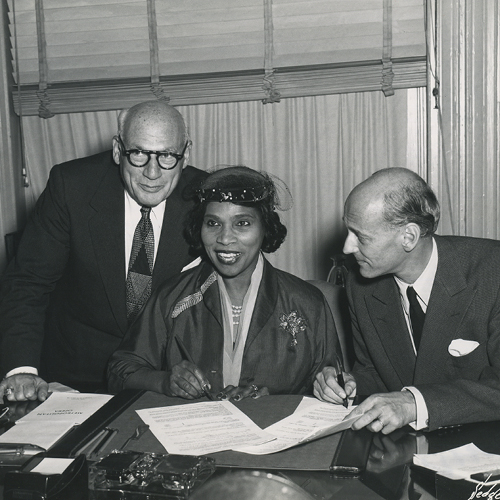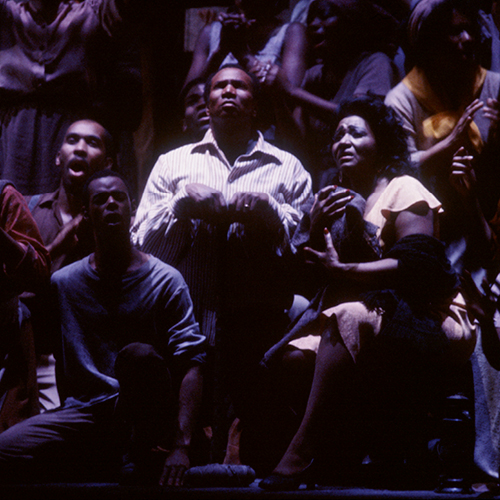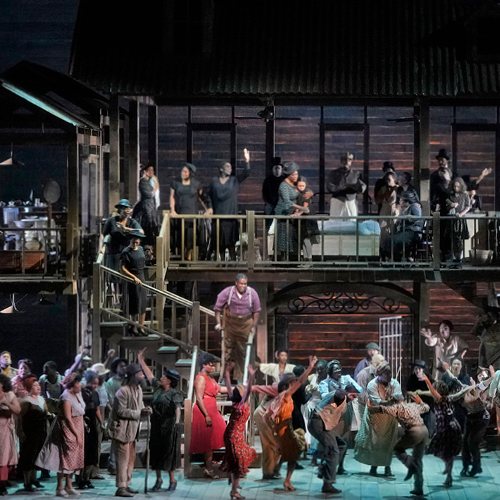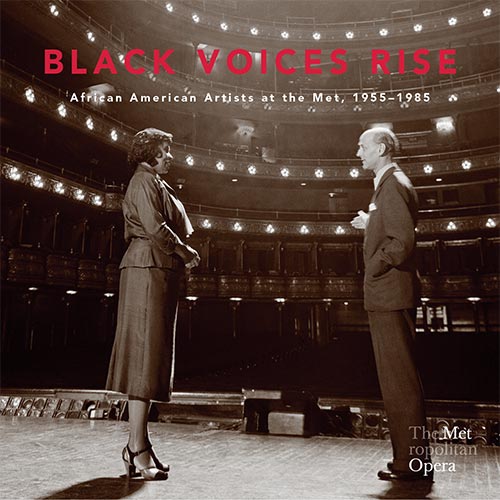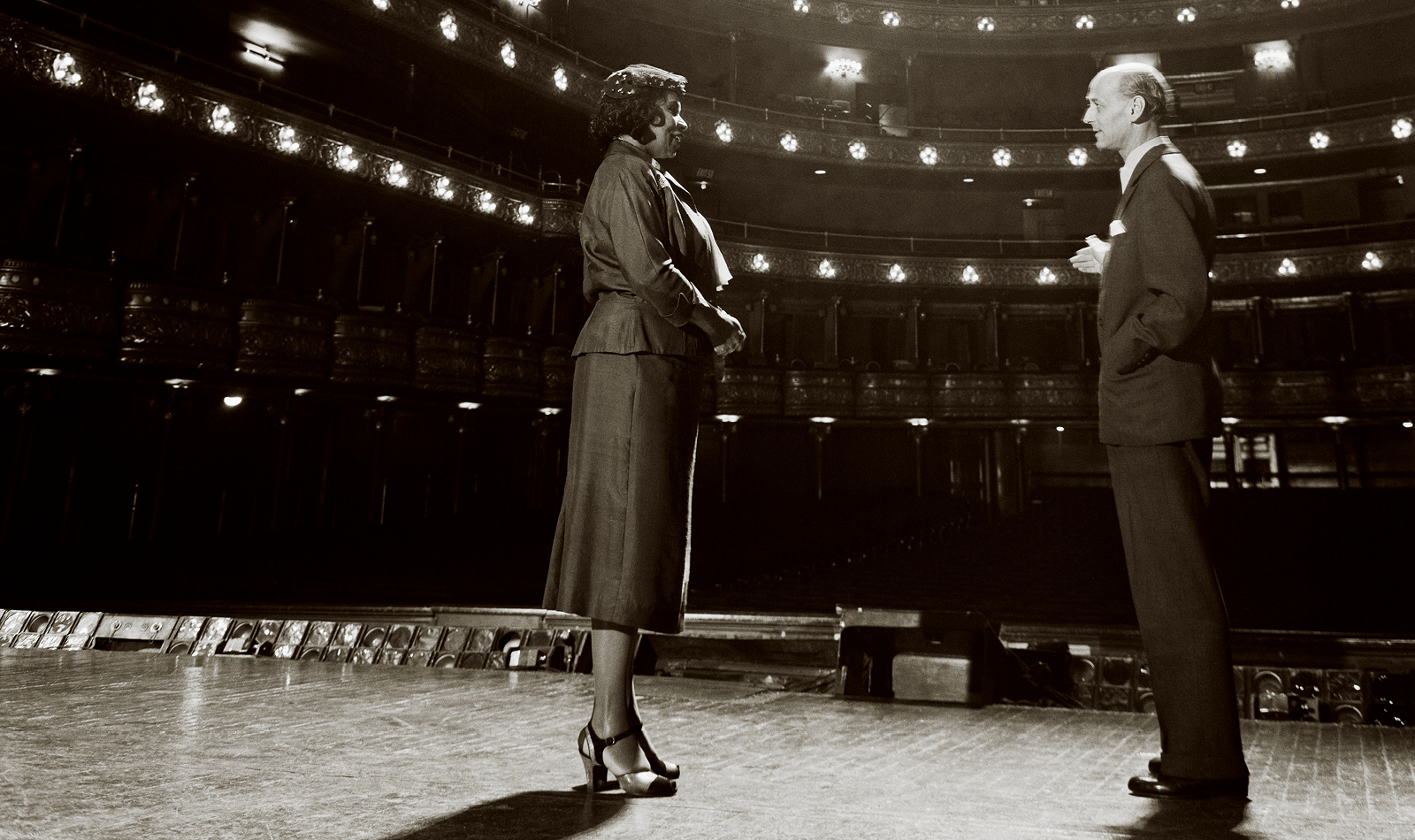
Black Voices at the Met
This exhibition, which celebrates the extensive contributions made by African American artists at the Met and chronicles the decades-long struggle for racial equality in the nation’s leading opera company, was created in connection with the 2019 new production of Porgy and Bess and originally installed in the opera house. It is being presented in this digital format as part of the Met’s observation of Black History Month 2021 and to ensure that this exploration of an important part of the company’s history is widely available.
The process by which African American artists evolved from background performers in Met productions to leading roles was slow and arduous. Although Black artists had appeared at the Metropolitan Opera since before the turn of the 20th century, it was not until 1955, when contralto Marian Anderson made her Met debut as Ulrica in Verdi’s Un Ballo in Maschera, that a Black artist took center stage in a principal role. Media attention surrounding Anderson’s first appearance shined a spotlight on the rank injustices that preceded that moment and, in tandem with contemporary political events, ushered in a new age for opera in the United States.
An important catalyst for change was the creation of George Gershwin’s Porgy and Bess in 1935. Gershwin’s casting preference for African American singers in his opera allowed generations of Black performers to showcase vocal and dramatic talent that might otherwise have been excluded from major American stages. Undoubtedly the most popular and arguably the greatest American opera, Porgy and Bess has thus provided an ongoing platform for the advancement of Black talent in the opera house, and in opera companies worldwide.
This exhibition recounts the overdue arrival of important Black singers to the Met and places Porgy and Bess within the context of the larger struggle for racial equality at the company. It examines the period preceding Anderson’s debut, which holds numerous rarely told stories of Black performers and personalities within the Met; the era of General Manager Rudolf Bing, who abolished the Met’s discriminatory practices when he arrived in 1950; and the successive waves of major Black artists who have performed at the Met up to the present time. Porgy and Bess figures prominently throughout this journey, first as a Broadway show, then through several ill-fated attempts to have it performed at the Met, and finally its 1985 company premiere and the recent new production.
Black Voices at the Met also exposes the hardships and struggles experienced by African American singers who challenged the status quo of Jim Crow–era racism and the allies who worked to make the casting system fairer and more responsive to changes in American society. The Met’s is an imperfect history, shaped not only by bigotry and acquiescence to the status quo, but also by examples of fairness, integrity, determination, and the acknowledgement of talent and artistic excellence. The courage and readiness of early generations of African American singers and Met leadership helped change the course of operatic history in America. And, many of the extraordinarily talented Black singers who performed at the Met have subsequently performed to great acclaim in the greatest opera houses internationally. The careers and artistry of Black singers heard at the Met have become a beacon of hope and inspiration for generations of opera fans and aspiring performers.
Content Curators: Maurice Wheeler and Carolyn Guzski
Curator/Design Consultant: Jessica Bell Brown
Met Archives Director: Peter Clark
This exhibition is made possible by
